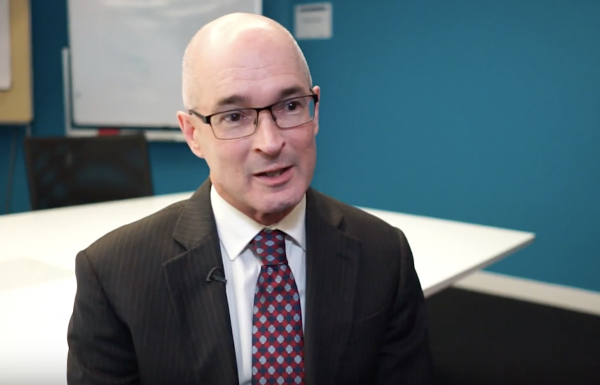CEO Ian Burgess says the Medical Technology Association of Australia is focussed on “extracting the full benefits” of its agreement with government.
Mr Burgess spoke to HealthDispatch as the association approaches the end of what he describes as a “challenging year”.
Having only been in the job for eight months, the MTAA boss says he had no real time to settle into the role, confronted with demands for prostheses price reform from day one.
“In the end, we have agreed to give up a lot, in $300 million, which essentially is the full difference between what is paid in the private and public markets. We have always been of the view a difference is justified, because the cost of servicing the private market is higher, but in the end it was that or potentially much more.
“The year has been a process, leading up to the signing of the agreement, but we have come out stronger with government recognising the importance of our sector. We have the agreement, which offers stability, and the lessons learned.
“A key learning is the importance of data and creating a strong evidence base. If we had our time again, we would probably engage earlier, particularly with data around pricing,” says Mr Burgess.
A PwC analysis commissioned by the MTAA found a 15.3 per cent differential between public and private pricing of medical devices. This equated to an annual difference of just over $300 million.
“It is the only comprehensive and credible data set comparing like-for-like and, while it was very good to have and a key factor in the negotiations, it would have been even more helpful earlier in the process,” he says.
The association is now focussed on extracting the full benefits of its five-year strategic agreement with government, says Mr Burgess.
The five-page document describes the purpose of the agreement as promoting the sustainability and affordability of privately insured health care along with a viable, innovative and diverse medical technology sector.
Its key inclusion is price cuts to devices included on the Prostheses List, applied in two tranches, in February 2018 and then again in February 2020.
It also includes measures designed to reduce the time to market for medical devices. The measures include, from February next year, applications for inclusion on the Prostheses List, which have been approved by the TGA, will not have duplicative safety and efficacy assessment by the Prostheses List Advisory Committee (PLAC) and its subcommittees.
“The agreement presents an enormous opportunity for our industry and we have already had some very constructive discussions with the Department of Health. They are well advanced because, practically speaking, some of the timing is quite tight in terms of getting things done. It includes the creation of a number of working groups, with formation of those and development of work plans already underway.
“We are also looking beyond the agreement to working with government and other stakeholders on how we create and maintain a policy and operating environment conducive to the growth of our industry.
“There are some very exciting Australian medtech companies and fostering their growth is a huge opportunity for Australia.”
On conflict with private health insurers, a prominent feature of 2017, Mr Burgess believes the sectors can reconcile. “Ultimately, we have to, not least because the prostheses list is an important part of the PHI value proposition.”
He continued, “The focus needs to move to promoting the value of PHI and we need to be better aligned on that. The pressure is obviously on the insurers to pass-on the full benefit of the prostheses price reductions to policy-holders, and I note their commitments on that.”
